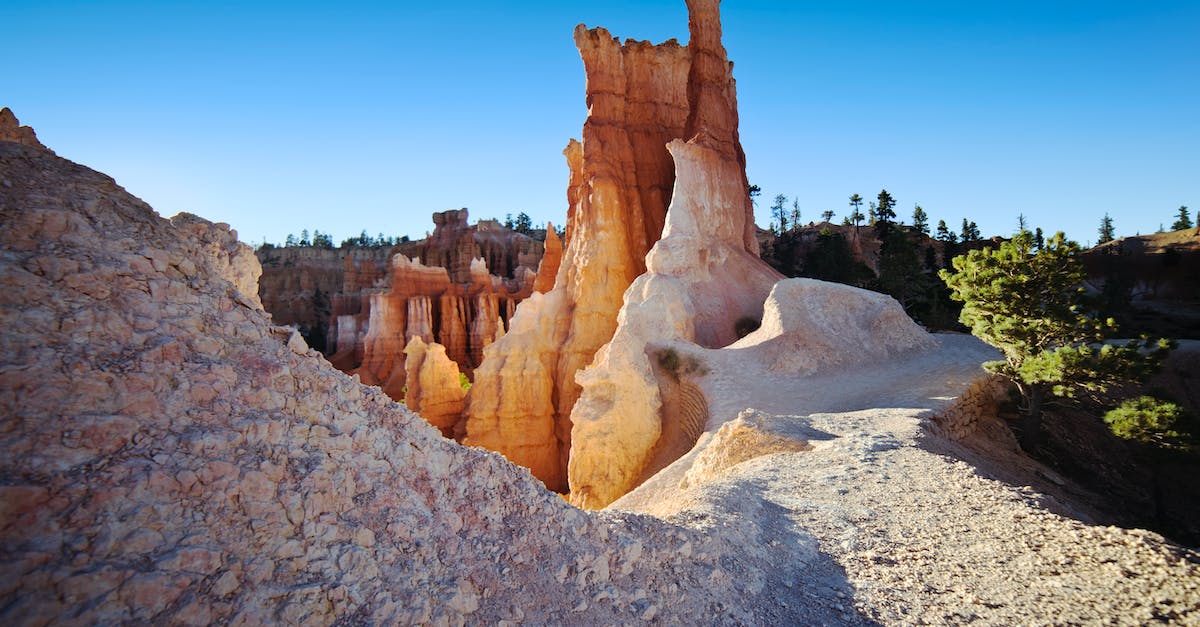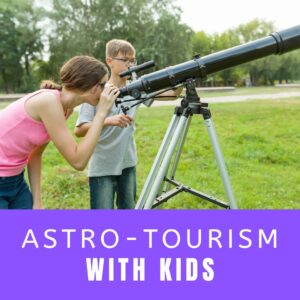This site contains affiliate links to products. I may receive a commission for purchases made through these links.
I’ve always been mesmerized by the night sky. It’s a vast canvas painted with twinkling stars, galaxies, and other celestial wonders. And there’s no better place to enjoy this spectacle than in Utah.
Utah’s dark skies are a paradise for stargazers. With minimal light pollution and vast, open spaces, it’s truly a haven for anyone who enjoys looking up at the night sky. Whether you’re an amateur astronomer or just love gazing at the stars, Utah’s got a spot for you.
So, let’s dive into the best places for stargazing in Utah. Trust me, you won’t be disappointed. It’s time to grab your telescope or simply lay back and let the universe mesmerize you.
Dark Skies of Utah
Before we delve into the best places for stargazing in Utah, you must first understand why it’s such an exceptional location. When night falls, with it unravels the grandeur of our universe, something that Utah’s dark skies effortlessly manifest.
Unlike most parts of the world suffering from extensive light pollution, Utah prides in having the most International Dark Sky Places. That’s an impressive testament to the state’s commitment to preserving the night sky.
The state is home to over 15 designated International Dark Sky Parks! A substantial contribution to the global count. Each of these parks carries a unique stargazing appeal that draws astro enthusiasts from across the globe year-round.
Let’s look at a brief snapshot of Utah’s world-renowned Dark Sky Parks.
| Park Name | Key Highlights |
|---|---|
| Canyonlands National Park | Milky Way, Meteor Showers |
| Hovenweep National Monument | Ancient Ruins, Zodiacal Light |
| Capitol Reef National Park | Night Hikes, Star Parties |
| Natural Bridges National Monument | Milky Way, Moonlit Monuments |
You might ask, “What makes these places ideally dark?” Aside from the minimal artificial illumination, the dry climate and high altitude significantly contribute to the darkness. The resulting atmosphere packs less vapor, minimizing light dispersal and giving way to crystal clear celestial vistas.
Having tackled why Utah’s dark skies are a stargazing gem, let’s shift our attention to where exactly you can lay your blanket down and soak up the dazzling dark spectacle that is the Utah night sky.
Bryce Canyon National Park
Bryce Canyon National Park is a utopia for stargazers. As an officially designated International Dark Sky Park, it effortlessly attracts astronomy lovers from around the globe. It’s the perfect milieu for acknowledging the celestial grandeur due to its remote location and dark skies.
The park is located far from major cities, reducing light pollution and ensuring optimum viewing conditions. Without a doubt, light pollution is the enemy of stargazing. Since Bryce Canyon is starkly isolated, ambient city lights don’t interfere with the dazzling night sky spectacle.
Being over 10,000 feet above sea level, the high altitude of the park adds to the magic. Crystal clear views of the Milky Way and countless stars are an invaluable treat to the observer. The sheer, non-polluted darkness combined with the high elevation results in dramatic and crisp views of the cosmos.
Not forgetting, the park’s unique red rock formations add an extra visual delight! Can you imagine experiencing a meteor shower with such a dramatic backdrop?
Here’s a quick glance at some intriguing dark sky facts about Bryce Canyon:
| Fact | Description |
|---|---|
| Location | Remote, away from major cities |
| Altitude | Over 10,000 ft. above sea level |
| Light Pollution | Minimal |
| Aesthetic Factor | Red rock formations |
I can’t stress enough the importance of planning your trip. Björn Jónsson’s moon calendar is an excellent tool for chalking out the best time to observe the moon and various celestial events at Bryce Canyon. Timing your visit during no moon or new moon days would mean less natural light hindrance, allowing you to behold a truly dark sky.
Bryce Canyon National Park seldom disappoints the stargazers. Each visit further instills the belief that it’s indeed an unspoiled hub where the grandeur of the Universe is so palpably felt. It’s often said that in Bryce, it’s not the stars that are far away but the realization that we are part of something awe-inspiringly vast and beautiful. And this feeling keeps the stargazers coming back for more.
Capitol Reef National Park
Shifting gears from the mesmerizing Bryce Canyon, let’s journey into the heart of Utah to another spectacular site – Capitol Reef National Park. Just like our previous stargazing destination, this park too wears the proud badge of an International Dark Sky Park.
Capitol Reef is a stargazing paradise, defined by its bountiful opportunities for heavenly gazing experiences. Nestled far from city lights, it’s a realm wherein distant celestial bodies glow brightly in the black velvet of the night sky.
Dark skies are nothing short of an asset here. The park’s remote location substantially curtails light pollution. It’s here that the fabric of the universe unfolds to display its glittering glory. As someone who’s spent many a night under the twinkling expanse, I can affirm that the heart of the universe beats extraordinarily vividly in this park.
The backdrop of towering cliffs, intricate rock formations, and serene orchards under the radiant, clear view of the Milky Way is a spectacle that’s impossible to forget. Just imagine laying your blanket down, your telescope at the ready, the cool night air embracing you, and the great cosmic show unfolding overhead. This isn’t just plain stargazing; it’s an opportunity to build memories that will stand the test of time.
To maximize your stargazing experience, I strongly advise using a Moon Calendar tool to plan your visit around the new moon. You’ll find this especially helpful in observing faint stars and galaxies.
While planning your visit, consider joining the park’s Annual Heritage Starfest. This event offers free astronomy programs and telescope viewing opportunities, steered by experienced astronomers. Here, you’ll get to engage in enriching conversations about the universe while diving deeper into the astronomical wonders under the dark, star-filled Utah skies.
The allure of Capitol Reef National Park extends beyond its perfect stargazing conditions. Its vast, colorful landscapes and rich historic legacy are sure to mesmerize the explorer in you. So, pack your bags, grab your telescope, and get ready for a journey that’s as fulfilling during the day as it is under the star-filled night.
Goblin Valley State Park
Turn your gaze towards Goblin Valley State Park, another spot boasting the title of an International Dark Sky Park right here in Utah. Here’s where things get a little other-worldly. Not only does the park offer a spectacular view of the night sky, but it’s also renowned for its characteristic landscape riddled with sandstone goblins and formations.
This stunningly eerie environment complements the celestial spectacle above, endowing stargazers with an experience that is purely surreal. It’s not just about the stars at Goblin Valley. The moon casts an ethereal glow over the goblin-like formations during the night, augmenting the mysterious ambience of the park.
To maximize your stargazing experience at Goblin Valley, you’d want to align your visit around a new moon phase when the moon’s light doesn’t interfere with the starlight. That’s when the starry blanket is the brightest in the sky. Use a moon calendar tool to mark out these dates.
Goblin Valley State Park is also known for its outdoor activities. Hiking through fiery red canyons during the day, followed by an intriguing saga of constellation hunting at night, makes the trip memorable.
One more reason to to add this destination to your itinerary? Amazing free astronomy programs! On selected nights, members of local astronomy clubs share their knowledge and telescope access with visitors. It’s a great opportunity to learn more about the cosmos and to see vital celestial bodies up-close.
As you prepare to visit Goblin Valley State Park, know that you’re stepping into a cosmic frontier where vivid galaxies, sparkling constellations and bright planets hold a nightly rendezvous. You’ll be a humble observer, bearing witness to the grandeur of the universe, all while standing amidst a scene straight out of a sci-fi movie.
Antelope Island State Park
Let’s shift gears and take a look at another perfect spot for stargazing in Utah: Antelope Island State Park. Nestled within the freshwater of the Great Salt Lake, this park boasts an abundance of wildlife and wide-open spaces. But what helps Antelope Island stand out among other parks is its unique Dark Sky Designation. This title ensures the park’s extradition from light pollution, offering stargazers an environment to truly immerse themselves in the night sky’s awe-inspiring spectacle.
Stargazing opportunities are plentiful on this island due in part to the park’s emphasis on preserving darkness. You can expect a supreme viewing experience – from spotting constellations with the naked eye to observing deep-sky objects with a telescope.
You may be wondering when the ideal time is to visit. It’s best to take into account the moon phase during your park visit. A new moon or crescent moon phase provides optimal stargazing conditions due to lack of light interference. You’ll be astonished at the clarity with which you can see the Milky Way stretching across the heavens.
| Moon Phase | Description |
|---|---|
| New Moon | Provides the darkest nights, perfect for stargazing |
| Crescent Moon | Slightly more light, yet still good for observation |
Apart from the night sky, the park is also home to a vast range of outdoor activities. Take your day exploring the scenic viewpoints, hiking trails, and abundant wildlife. After your day’s adventure, set up camp at one of the park’s campsites and prepare for a night of celestial magic.
Antelope Island, with its accessibility, incredible wildlife, and most importantly, clear and dark skies, truly does make it an ideal location for stargazers and outdoor enthusiasts alike. We shouldn’t overlook the park’s contribution to public astronomy education either. They often host free astronomy programs that let you view through their telescopes and learn from experts about various celestial bodies.
In the kaleidoscope of Utah’s stargazing locations, Antelope Island State Park adds a unique hue of deep indigo, offering a perfect stage for the cosmic dance of stars and galaxies. Certainly, it isn’t just a sight to see, but an experience to be felt and remembered. Even without the glint of stars, Antelope Island wears its own kind of magic, a testament to Utah’s varied and enchanting landscapes.
Conclusion
So, if you’re looking for the ultimate stargazing experience, Antelope Island State Park’s your best bet. Its Dark Sky Park status guarantees minimal light interference, allowing for a stellar viewing experience. Whether you’re a casual observer or an avid astronomer, you’ll be thrilled by the celestial wonders visible here. Plan your visit around a new or crescent moon phase to maximize your stargazing potential. But it’s not just about the stars – the park’s outdoor activities and free astronomy programs add to its appeal. So, why wait? Grab your telescope, lace up your hiking boots, and get ready to explore the night sky like never before at Antelope Island State Park. It’s a stargazing haven that promises an unforgettable experience.
What is Antelope Island State Park?
Antelope Island State Park is a popular stargazing destination located in Utah. As it’s a designated Dark Sky Park, it offers minimal light pollution, leading to optimal stargazing conditions.
What can visitors expect at the park?
From viewing constellations with the naked eye to spotting deep-sky objects with a telescope, outdoor lovers can anticipate a prime stargazing experience at Antelope Island State Park. Hiking trails, scenic viewpoints, and abundant wildlife add to the rich outdoor experience.
When is the best time to visit for stargazing?
The best stargazing conditions at Antelope Island State Park are typically during the phase of a new moon or crescent moon. This allows for darker skies and clearer views of celestial bodies.
Are there astronomy programs at the park?
Yes, Antelope Island State Park offers free astronomy programs. These include telescope viewings and learning sessions led by astronomy experts, providing an exciting and educational experience for visitors.



